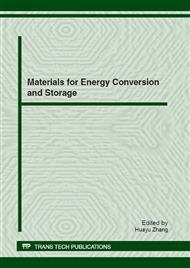p.256
p.261
p.265
p.269
p.273
p.277
p.281
p.287
p.291
The Effect of Sintering Temperature on the Physical Properties and Bending Strength of Zirconia Toughened Ceramic
Abstract:
This research investigated the effect of sintering temperature on the physical properties and bending strength of zirconia toughened ceramic (ZTC). 3mol% yttria-stabilized zirconia compacts were prepared by dry press method and then sintered with different final sintering temperature: 1490°C, 1530°C, 1570°C and 1610°C respectively. The physical properties and three-point bending strength were measured. The results of the test indicated that the density and shrinkage of ZTC increased along with the rise of sintering temperature, while the surface porosity of the samples decreased. The curve of flexural strength is indicated the variolation tendency of falling after rising, being the maximum at 1570°C. The results of this experiment showed that the best sintering temperature of yttria-stabilized zirconia was showed at 1570°C in terms of physical properties and bending strength among the selected temperature range.
Info:
Periodical:
Pages:
273-276
Citation:
Online since:
July 2012
Authors:
Price:
Сopyright:
© 2012 Trans Tech Publications Ltd. All Rights Reserved
Share:
Citation:


